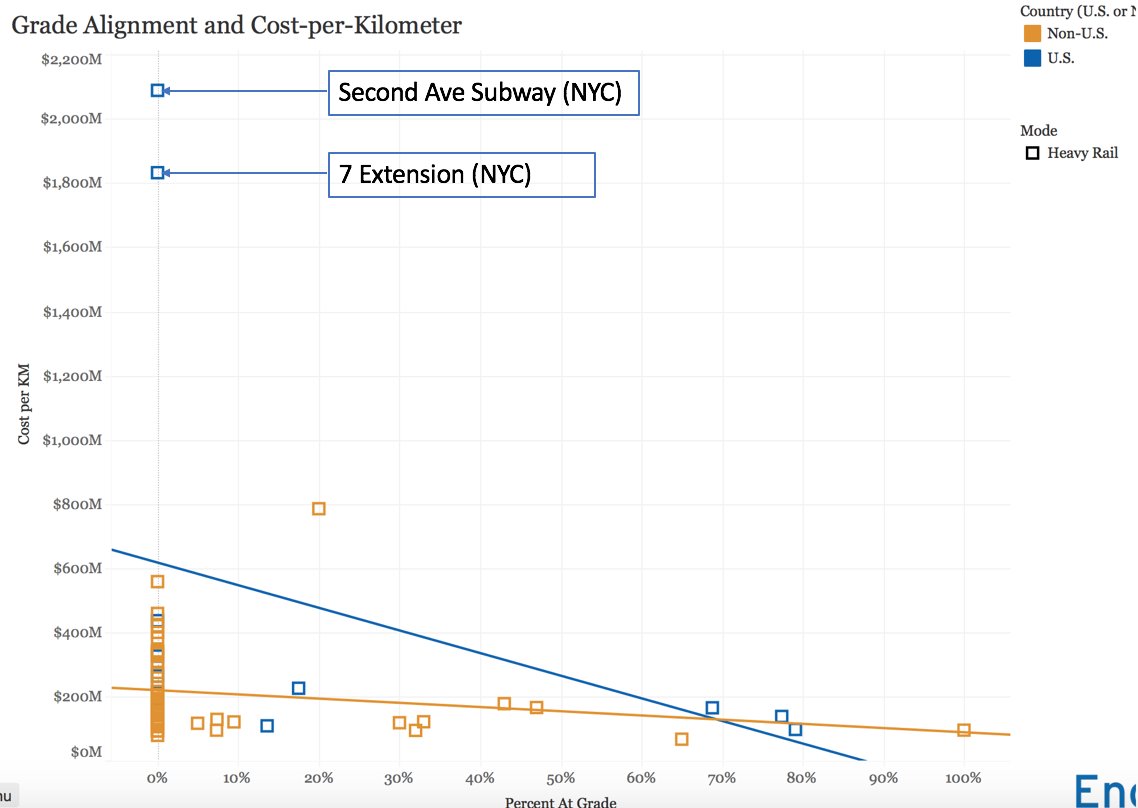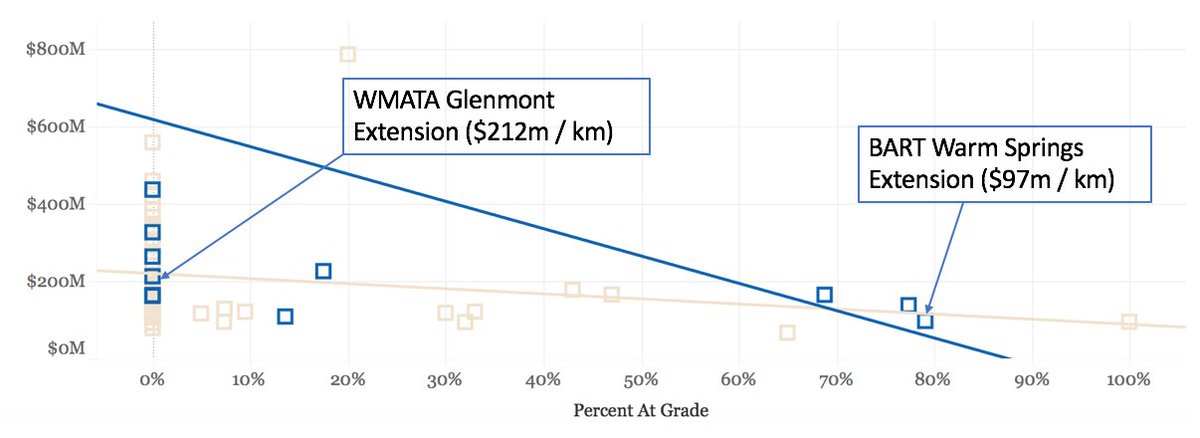In December 2020, @EnoTrans released a draft report on US transit construction costs. It had some perhaps-surprising findings, for example, in revealing that US rail projects outside NYC are *not* more expensive than international comparisons. I wanted to learn more... (1/_)
As the report notes, there is a lot of interest in whether US transit construction costs are unusually high. Many commenters who believe this to be true cite @alon_levy's work. However, there aren't many (any?) really complete comparisons of international costs... (2/_)
The team at @EnoTrans have put together a really nice database, including 171 transit projects, with associated costs, that were completed in the USA, Canada and Europe between 2000 and 2020. This is a great resource for the community. Link: https://docs.google.com/spreadsheets/d/1qeClOkIKAH21Us2PG6DvpMFI5F32o4nvizrRlJHQ6dI/edit#gid=1248277766
The Eno database does NOT include examples from Asia. Not at this stage, anyway. This to limit the scope, and because (as they argue) European countries and Canada may be more similar to the USA. (4/_)
There is a clearly-articulated methodology about how @EnoTrans compared the projects, in terms of adjusting for inflation, and purchasing-power parity. Probably you could debate their methodology, but it is clearly articulated (and seems reasonable imho). (5/_)
The team note that it is hard to compare transit projects. I strongly agree (I think it may be so hard as to be impossible). Nonetheless, they have attempted to break down the costs for each project into around a dozen categories. (6/_)
Given the rigorous approach that the team at @EnoTrans have taken, I think their findings ought to be taken very seriously. Note that what they have published so far are just initial findings. There is so much detail in their database that there is surely more to come. (7/_)
I want to consider the "Takeaway 2" headline claim, about US heavy rail costs. I'm going to refer to the graph linked below, which I am restricting to just "heavy rail" 8/_) https://www.enotrans.org/enotransitcapitalconstructiondatabase/
Blue squares are US heavy rail projects, orange squares are non-US. Costs shown are per km (fwiw). What jumps out is that the two projects done in NYC (Second Ave Subway, 7 extension) are basically *off the scale*. Far more expensive than anything else! (9/_)
Outside of NYC though, US heavy rail projects do not seem as bad. ~$100m-200m / km is pretty standard, even in Europe. There are seven projects in the US that are in the database as under $220m / km. I shall list them below... (10/_)
WMATA Red Line extension to Glenmont (212m / km). Miami Airport Link metrorail ($161m / km). SF Coliseum - Oakland Airport line (108m / mi). BART SFO extension ($225m / km) (actually that's just over $220m, my bad). (11/_)
WMATA Silver Line Phase 1 ($164m / km) and Phase 2 ($137m / km). BART Warm Springs Extension ($97m / km). (12/_)
Although nobody can touch the per kilometer cost of the two recent subway projects in New York, European projects can also be quite expensive, more expensive even than superficially-similar projects in the USA. (13/_)
The @EnoTrans report also considers light-rail projects. However, they find that the choice of "light-rail" vs "heavy-rail" doesn't make much difference for overall costs. The USA does seem to pay a premium for tunneled projects though. (14/_)
I'm going to stop. I know that @alon_levy is working with a team from NYU to deepen their analysis. The @EnoTrans seem totally respectful of Alon's work, and hopefully their study will help everybody understand the question of transit costs better. (15/15)

 Read on Twitter
Read on Twitter




